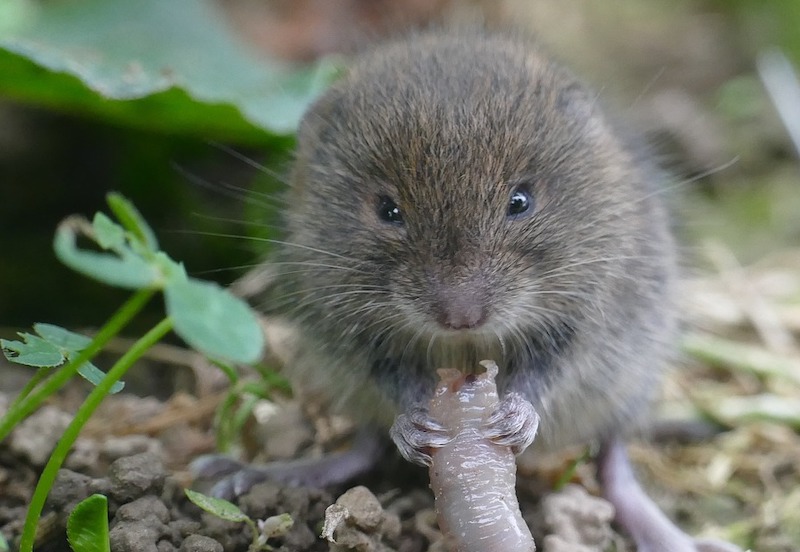Hostas are hardy perennials with large, often variegated foliage. These plants are nearly indestructible and will thrive in most landscapes. Pests are one of the few things that can be a problem for hostas, but these resilient plants can often recover. Learning to control and prevent hosta infestation will help plants grow large and healthy.
Common Hosta Pests
Slugs
Slugs are the most common pest that impacts hosta. Irregularly shaped holes in the foliage are signs of slug damage. Damaged leaves can still conduct photosynthesis, but the plant's appearance is marred. If left unchecked, slugs can eat a lot of foliage and stunt the plant’s growth.

Treating Slugs on Hosta
The easiest and most effective way to treat slugs on hosta is to remove them. Slugs are most active at night, so inspect the plant in the evening and remove any slugs on or near the plant. Check the underside of the foliage and around the base of the hosta. Sprinkling coffee grounds on the plant will discourage slugs, or placing a small cup of beer will attract and drown the slugs.
Preventing Slugs on Hosta
Prevent slugs on hosta by removing debris, like dead growth, around the plant. Divide full, crowded plants in the fall to discourage slugs.
Leaf Nematode
Leaf Nematodes are tiny roundworms that burrow into the stems and foliage of hostas. These pests feed on the plant's interior portions, causing dead growth patches. Signs of damage from leaf Nematodes include yellow streaks in the foliage that evenly turn brown and die. The dead parts of vegetation are contained within an otherwise healthy-looking leaf. The damage is easy to confuse with a disease because Nematodes are so small they cannot be seen with the naked eye.
Treating Leaf Nematode on Hosta
Treat Leaf Nematodes by removing and destroying damaged foliage. Trim the impacted leaf at ground level, removing the entire leaf and stem. Spray the plant with insecticidal soap or horticultural oil.
Preventing Leaf Nematode on Hosta
Prevent leaf Nematodes on hostas by watering the ground around the plant and keeping the foliage dry when possible. Leave plenty of space between hostas when planting, and divide plants when they fill in to maintain distance and airflow around each plant.
Voles
Voles are small rodents, also known as field mice. These furry pests dig tunnels just beneath the ground. They feed on plant matter and are known to target hostas. Voles will eat the roots and crown of hosta plants. Root damage causes the plant to wilt and die quickly. Damage to the crown will also cause a rapid decline.

Treating Voles
Remove dead and dying foliage damaged by voles. Hostas are hardy plants that will likely recover during the next growing season. Fertilize the plant to give the plant a boost and encourage new growth.
Preventing Voles
Prevention is the best method for dealing with voles. Remove debris like dead plant growth, weeds, and nearby wood piles to discourage voles from living in the area. Home remedies to keep voles away include sprinkling cayenne, garlic, peppermint oil, or onion powder into their holes.
Deer
If you discover your lush, vibrant hosta plants have been reduced to leafless stems sticking out of the ground, then deer are likely to blame. Deer are mammals with a vegetarian diet, and hostas are one of their favorite foods. A large deer population can quickly destroy hosta plants. Hostas store energy in their roots to carry them through the winter and into the next growing season. Plants that lose all of their foliage early in the growing season may not recover. Plants that retain some foliage or are damaged later in the growing season may recover with time.
Treating Deer Damage
Prune hostas eaten by deer to remove foliage with significant damage. The plant needs some greenery to survive, so try to retain leaves when possible.
Preventing Deer From Eating Hosta
Install a barrier like a fence around your hosta to keep deer away. Scent-based deterrents can discourage deer from eating hosta foliage, but they need to be reapplied weekly and after rain. Planting hosta near a home or frequently used patio may deter deer from getting close.
Hosta Pests Chart
|
Pest |
Identifying |
Treating |
|
Slugs |
Soft-bodied, elongated mollusks without shells |
Remove during nighttime when they are most active |
|
Leaf Nematode |
Tiny roundworms that burrow into the stems and foliage |
Remove and destroy damaged foliage and trim leaves at ground level |
|
Voles |
Small rodents, also known as field mice |
Remove dead and dying foliage and fertilize |
|
Deer |
Mammals with a vegetarian diet; leafless stems sticking out of the ground |
Prune hostas eaten by deer to remove foliage with significant damage |
Sources:
"Hosta Diseases and Pests." Iowa State University. store.extension.iastate.edu
"Hosta Pests and Diseases." Michigan State University Extension. canr.msu.edu
 |
Author Alison Cotsonas - Published 05-03-2023 |
